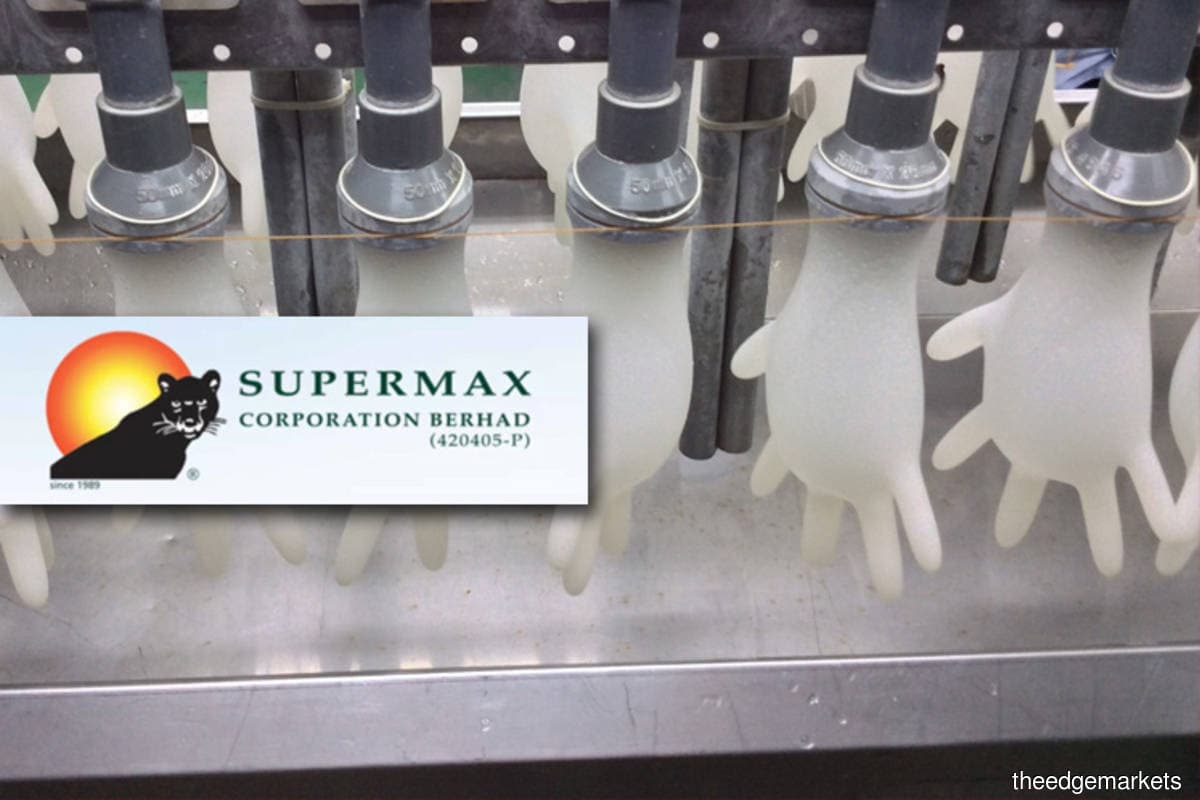
KUALA LUMPUR (May 5): As more new capacities are available in the market, rubber glove prices have started falling, said Supermax Corp Bhd.
"The glove prices have since dropped by between 15% and 25%. Currently, the spot market prices are lower than the contracted prices," said the rubber glove maker in its quarterly results' announcement.
The group, which posted a net profit of RM1 billion for the third quarter ended March 31, 2021 (3QFY21), said it anticipates the competition to intensify going forward.
There have been more new glove players jumping on the bandwagon in view of the surge in demand. In addition, the current players are increasing capacities in a large scale, especially players who are public-listed companies based in China, Malaysia and Thailand, Supermax commented.
"We are confident that our sound business model and well-established distribution networks built up since 1989 have prepared us well for all challenges ahead," it said.
On prospects, the group said the demand for gloves as personal protective equipment remains strong as the world continues to fight the Covid-19 pandemic.
While it is widely expected that the roll-out of Covid-19 vaccines will cause glove demand and consumption to moderate, the company believes that the drop will likely be gradual due to the structural changes in consumption, such as new consumption, new customers and greatly heightened healthcare and hygiene awareness.
Supermax announced a quarterly net profit of RM1 billion for 3QFY21, 5.2% lower compared with RM1.06 billion recorded in 2QFY21. Its quarter revenue fell 3% to RM1.94 billion in 3QFY21 compared with RM2 billion in 2QFY21.
Supermax commented its earnings would have been even better if not for the temporary shutdown of its Meru plants for sanitisation following detection of positive Covid-19 cases among the foreign workers.
According to Supermax, the group currently exports 58% of production under its own brands via its own distribution centres and 40% through independent distributors; the remaining 2% is for original equipment manufacturer (OEM) production.
"Due to the current robust demand, we are taking the opportunity to build new relationships with new customers and distributors in anticipation that they will continue with repeat orders post pandemic," it said.